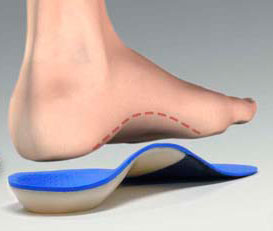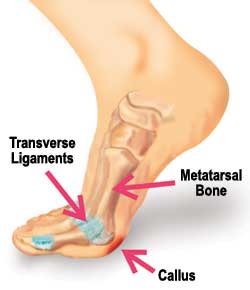History and Presenting Symptoms
The patient is a 14-year-old soccer player who reports frequent pain in her right hip and posterior thigh region for the past several months. This is most noticeable the day after a strenuous soccer competition or scrimmage when she has obvious tightness and tension in the back of her upper right thigh. She denies any specific injury but admits that she has been playing especially hard since being named team captain. She finds that lying down and putting warm towels around her hip helps the most.
Exam Findings
Vitals. This athletic girl weighs 120 lbs., which, at 5’4″, results in a BMI of 21—she is very active and fit. She is a non-smoker, and her blood pressure and pulse rate are well within the normal range.
Posture and gait. Standing postural evaluation finds generally good alignment with intact spinal curves and no evidence of scoliosis. Closer inspection identifies a higher left iliac crest, mild bilateral knee valgus, and static pronation of the right foot (calcaneal eversion with low medial arch). The navicular drop test (Brody’s) finds 7 mm of excursion of the right navicular prominence between sitting and standing, compared to 3 mm of drop on the left. Gait screening is negative for limp or noticeable asymmetry.
Chiropractic evaluation. Motion palpation identifies a right sacroiliac fixation, with moderate tenderness and loss of endrange mobility. Straight leg raise is limited to 80° on the right by pain at the hamstring origin.
Primary complaint. The right hamstring is weaker than the left on manual muscle testing, and palpation finds tenderness at the right ischial tuberosity and increased tension in the proximal hamstring muscle. All knee and ankle ranges of motion are full and pain free.
Imaging
Standing AP lumbopelvic view shows a leg length discrepancy with the right femur head 6 mm lower. Frog-leg views of both hips are negative for ischemic necrosis (Legg-Calve-Perthes) and slipped femoral capital epiphysis.
Clinical Impression
Chronic hamstring strain, with leg length discrepancy (right short leg) and asymmetric foot pronation.
Treatment
Adjustments. Adjustments of the right SI joint and right foot and ankle were provided as needed. The adjustments were supplemented by contract-relax stretches for the right hamstring muscle.
Stabilization. Flexible, shock-attenuating orthotics were fitted into her soccer shoes, and another pair was provided for daily wear. Both were custom made for her individual postural needs.
Rehabilitation. Daily strengthening exercises for the right hamstring were progressed from light to strenuous resistance using elastic exercise tubing in a standing position.
Response to Care
This young athlete responded rapidly to the adjustments and strengthening exercises. She adapted to the custom-made stabilizing orthotics with little difficulty and reported that her ankles and knees felt more secure when on the field. Within three weeks of receiving the orthotics, she had no post-exercise pain or tenderness. She was released from care after a total of eight visits over two months.
Discussion
Hip, upper leg and, even, knee pain in a young person with an immature skeleton always raises concerns of ischemic necrosis (Legg-Calve-Perthes) and slipped femoral capital epiphysis. This star athlete had no X-ray evidence of either condition, but did have a biomechanical asymmetry in the lower extremities which caused a functional short leg. Appropriate, focused treatment consisting of adjustments and stabilizing orthotics, along with stretching and strengthening exercises, brought about a rapid response.
While this patient had initial concerns about wearing orthotics in her well-fitting soccer shoes, she found them to be effective in helping reduce her hip symptoms and enhancing her athletic performance. To get the right fit in her specialized athletic shoes, tracings of the inside of her soccer shoes were sent to the orthotics lab along with her foam-casted weightbearing foot images.
Studies have found a significant decrease in electromyographic activity of the hamstring muscles during running while wearing orthotics. This is thought to be due to the increased stability of the ankles and knee joints, which allows greater relaxation of the hamstrings during gait, especially when running.
Dr. John J. Danchik is the seventh inductee to the American Chiropractic Association Sports Hall of Fame. He is the current chairperson of the United States Olympic Committee’s Chiropractic Selection Program. He lectures extensively in the United States and abroad on current trends in sports chiropractic and rehabilitation. Dr. Danchik is an associate editor of the Journal of the Neuromusculoskeletal System. He has been in private practice in Massachusetts for 29 years. He can be reached by e-mail at [email protected].

 Vitals: This 5’11’’ financial consultant weighs 195 lbs. which means that he is overweight (BMI of 27). He demonstrates a thickened waist (43 in.), confirming that his excess weight is due to abdominal fat deposition. He is a non-smoker, and his blood pressure and pulse rate are within the normal range, probably due to his history of regular vigorous exercise during racquetball.
Vitals: This 5’11’’ financial consultant weighs 195 lbs. which means that he is overweight (BMI of 27). He demonstrates a thickened waist (43 in.), confirming that his excess weight is due to abdominal fat deposition. He is a non-smoker, and his blood pressure and pulse rate are within the normal range, probably due to his history of regular vigorous exercise during racquetball.
